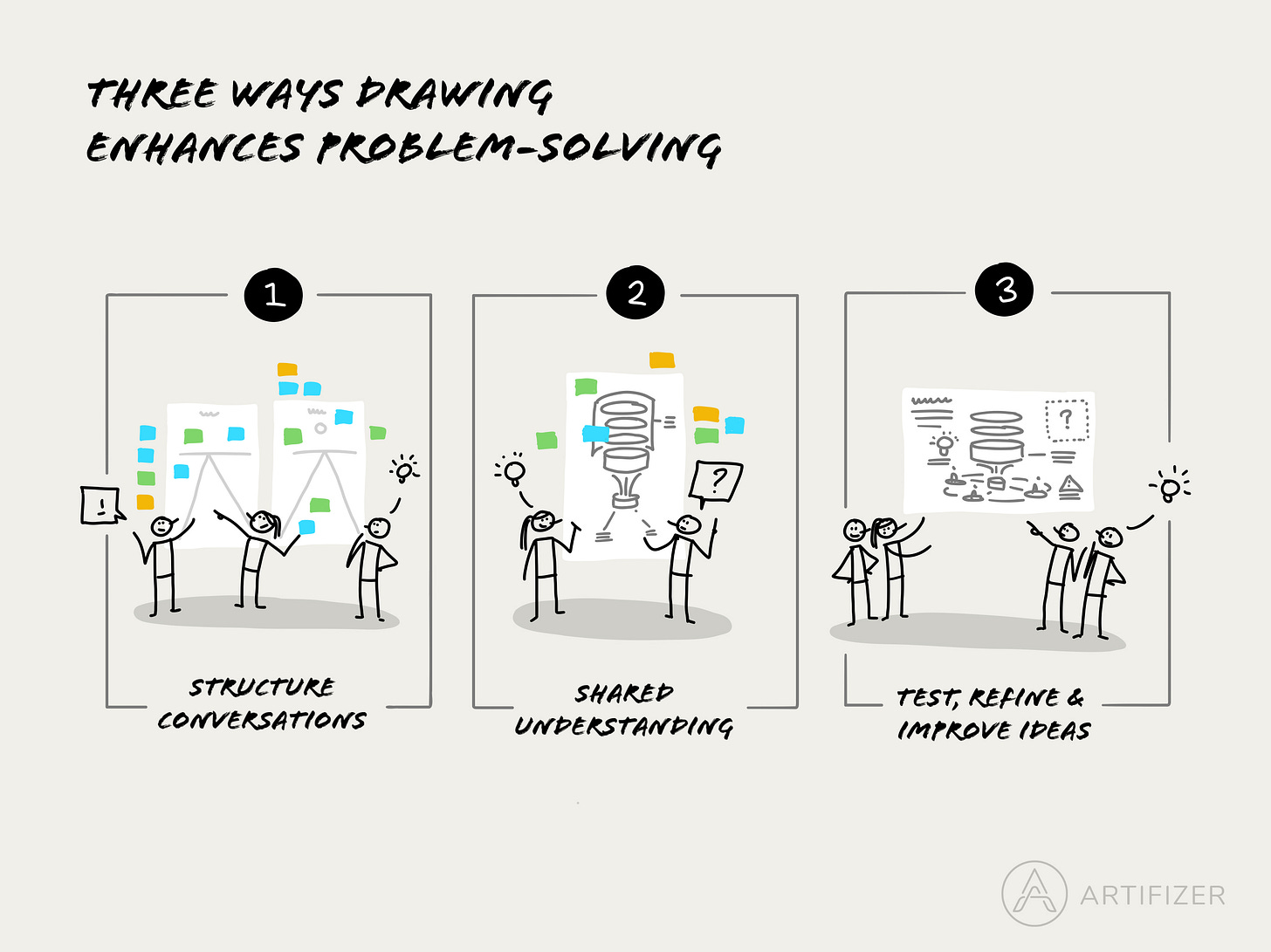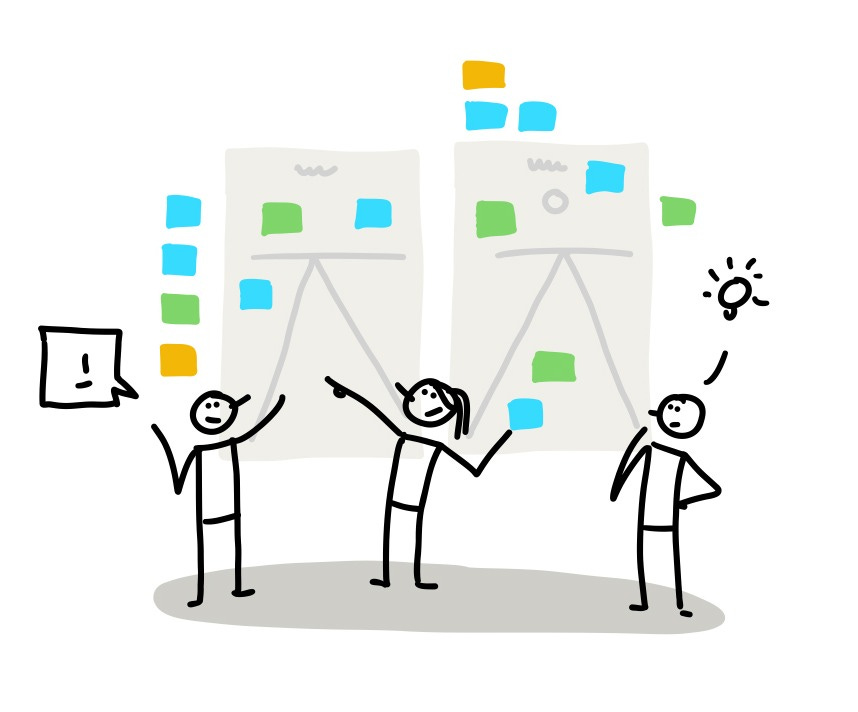Three ways drawing enhances problem-solving
When people think about drawing, they often see it as a way to make things look pretty or present ideas visually. But drawing is far more powerful!
Most of us rely on spoken or written words to communicate ideas and solve problems. But words alone can be limiting. They don’t always capture complexity well, and they can lead to misunderstandings. Visual thinking, on the other hand, makes abstract ideas concrete. It provides a common reference point, helping teams collaborate more effectively and ensuring nothing gets lost in translation.
To get the most out of drawing, use it with purpose. Here’s how it helps us think better and work together more effectively:
1. Structure Conversations for Clarity
One of the biggest challenges in team discussions is ensuring that people discuss the right things at the right level. Too often, conversations jump between details and big-picture thinking without a clear structure, leading to confusion and misalignment.
Drawing helps teams organize their thoughts by mapping information into clear areas, defining clusters, and visualizing the challenge. This allows teams to focus on relevant aspects rather than getting lost in details or circles.
Organizes information into clear areas for better structure.
Defines clusters to reveal key themes and relationships.
Creates a complete overview, making discussions more effective and focused.
2. Create a Shared Understanding of Challenges
Before finding solutions, teams need a shared understanding of the current state and challenges. Without this, team members may work from different assumptions, leading to misalignment and ineffective solutions.
Visual mapping helps create a shared mental model, ensuring that everyone sees the same problem from the same perspective. This also makes it easier to spot gaps, unknowns, and dependencies.
Develop a shared understanding of the challenge.
Identify relationships and hierarchies within the problem.
Gain insight into gaps and unknown areas for better decision-making.
3. Test, Refine & Improve Ideas Together
Once teams start generating ideas, the next step is to validate, iterate, and refine them. Many great ideas fail not because they aren’t valuable but because they aren’t tested or communicated effectively.
Drawing makes this process tangible. It allows teams to put their ideas on paper, get immediate feedback, and adjust before making costly mistakes. By using quick sketches, teams can iterate rapidly without investing too much time in premature refinement.
Utilize visuals to convey ideas and collect feedback.
Promote collaboration by sketching together.
Quickly test and enhance concepts through immediate feedback.
Takeaway: Drawing is a thinking tool
The best part? You don’t need artistic skills or fancy tools. A pen and paper—or a whiteboard—can transform how you think, work, and collaborate. The goal isn’t to create a masterpiece—it’s to make thinking visible, to clarify complex ideas, and to bring people together in problem-solving.
Next time you’re stuck in a messy discussion, facing a challenging problem, or trying to explain an idea—try drawing it out. You might be surprised how much faster and clearer things become








